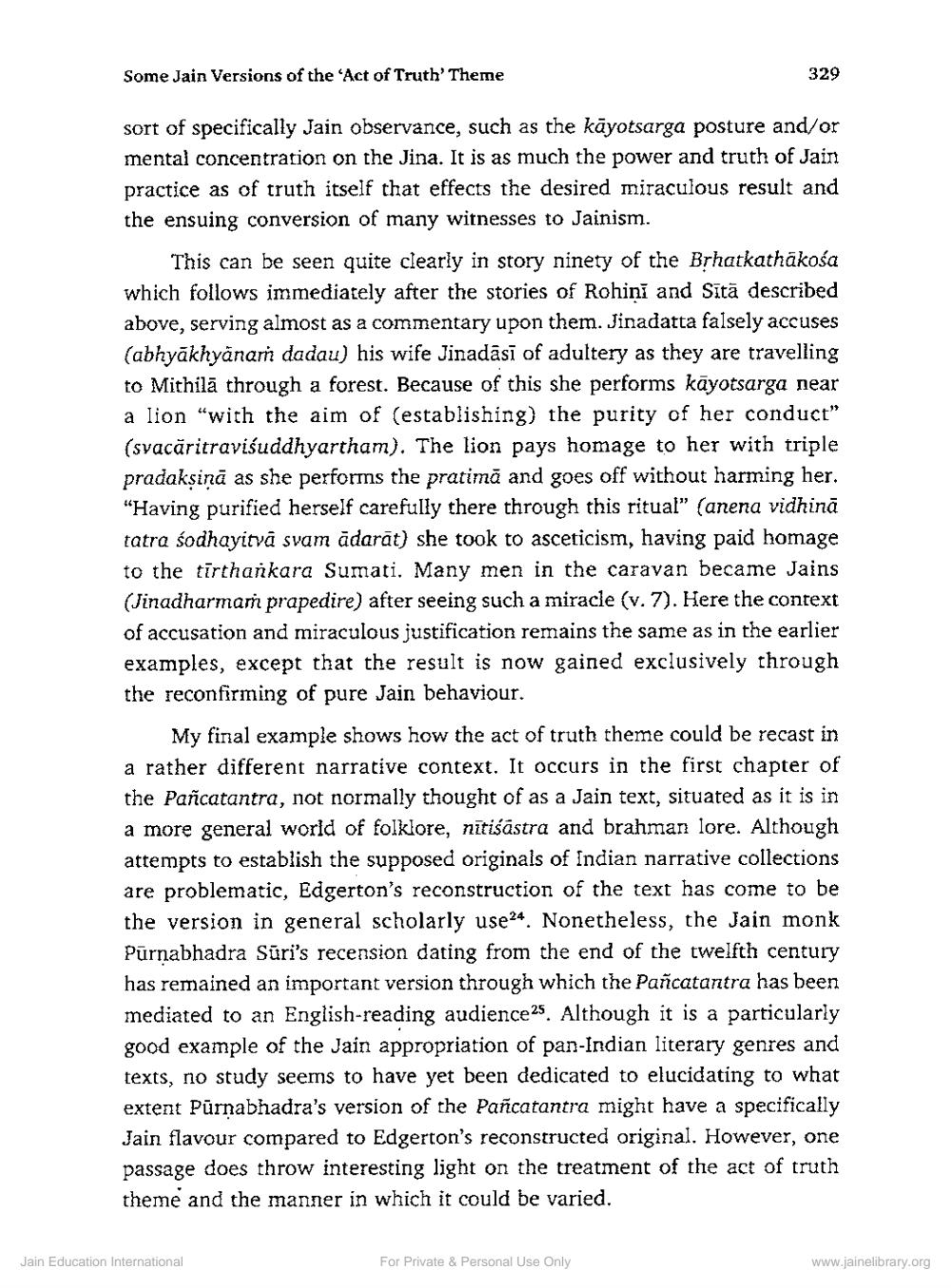Book Title: Some Jain Versions of Act of Truth Theme Author(s): Paul Dundas Publisher: Z_Nirgranth_Aetihasik_Lekh_Samucchay_Part_1_002105.pdf and Nirgranth_Aetihasik_Lekh_Samucchay_Part_2 View full book textPage 6
________________ Some Jain Versions of the Act of Truth' Theme 329 sort of specifically Jain observance, such as the kāyotsarga posture and/or mental concentration on the Jina. It is as much the power and truth of Jain practice as of truth itself that effects the desired miraculous result and the ensuing conversion of many witnesses to Jainism. This can be seen quite clearly in story ninety of the Brhatkathakośa which follows immediately after the stories of Rohini and Sītā described above, serving almost as a commentary upon them. Jinadatta falsely accuses (abhyākhyānam dadau) his wife Jinadāsī of adultery as they are travelling to Mithilā through a forest. Because of this she performs kāyotsarga near a lion "with the aim of (establishing) the purity of her conduct" (svacăritravisuddhyartham). The lion pays homage to her with triple pradaksinā as she performs the pratimā and goes off without harming her. "Having purified herself carefully there through this ritual” (anena vidhinā tatra sodhayitva svam ādarat) she took to asceticism, having paid homage to the tirthankara Sumati. Many men in the caravan became Jains (Jinadharmam prapedire) after seeing such a miracle (v.7). Here the context of accusation and miraculous justification remains the same as in the earlier examples, except that the result is now gained exclusively through the reconfirming of pure Jain behaviour. My final example shows how the act of truth theme could be recast in a rather different narrative context. It occurs in the first chapter of the Pañcatantra, not normally thought of as a Jain text, situated as it is in a more general world of folklore, nitiśāstra and brahman lore. Although attempts to establish the supposed originals of Indian narrative collections are problematic, Edgerton's reconstruction of the text has come to be the version in general scholarly use24. Nonetheless, the Jain monk Pūrnabhadra Suri's recension dating from the end of the twelfth century has remained an important version through which the Pañcatantra has been mediated to an English-reading audience25. Although it is a particularly good example of the Jain appropriation of pan-Indian literary genres and texts, no study seems to have yet been dedicated to elucidating to what extent Pūrnabhadra's version of the Pañcatantra might have a specifically Jain flavour compared to Edgerton's reconstructed original. However, one passage does throw interesting light on the treatment of the act of truth theme and the manner in which it could be varied. Jain Education International For Private & Personal Use Only www.jainelibrary.orgPage Navigation
1 ... 4 5 6 7 8 9 10 11
